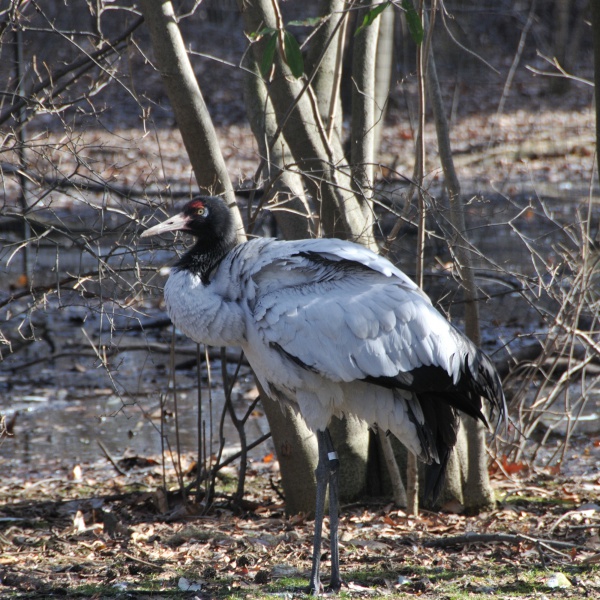Facts About Black-necked crane
The black-necked crane is a medium-sized crane native to Asia, predominantly found on the Tibetan Plateau and in remote regions of India and Bhutan. Measuring approximately 139 cm in length and boasting a 235 cm wingspan, these cranes weigh around 5.5 kg. Their distinctive appearance includes whitish-gray bodies, black heads with a red crown patch, black upper necks and legs, and a white patch behind the eye. Both primary and secondary feathers are black, and the sexes are visually similar.
In Buddhist traditions, the black-necked crane holds a revered status and is often culturally protected in many areas. During the breeding season, they inhabit alpine meadows, lakeside and riverine marshes, and river valleys on the Tibetan Plateau. As winter approaches, they migrate to sheltered valleys or lower altitudes. The largest populations are found in China, with smaller groups in Vietnam, Bhutan, and India.
These cranes typically forage on the ground in small groups, consuming tubers, plant roots, earthworms, insects, and other invertebrates. While generally cautious, they have learned to distinguish local people and show tolerance towards them.
Breeding pairs of black-necked cranes form long-lasting bonds, with their courtship involving intricate dancing displays. Nests are commonly built on pre-existing mud islands in wetlands. Eggs are primarily laid in May and June. While young cranes can forage independently, they typically stay close to their parents.
Unfortunately, the black-necked crane faces numerous threats, including habitat loss, hunting, and dangers such as predation by leopards, collisions with power lines, and egg predation. They are legally protected in China, India, and Bhutan. The global population of these cranes is estimated to be between 8,800 and 11,000 individuals. They are classified as Vulnerable on the IUCN Red List of Threatened Species and are listed on Appendix I of CITES. The primary threats to their survival include habitat loss and degradation, particularly in their wintering areas. In Bhutan, although they are well-protected both culturally and legally, disturbances from tourism still pose a risk.

 North Korea
North Korea